#Shakespeare's Henry VI
Text
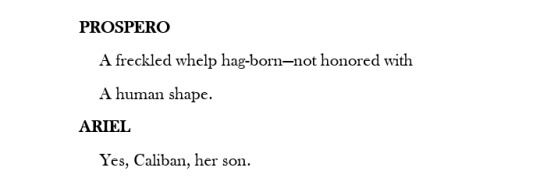









unlovable creatures
quotes from: the tempest, shakespeare // henry vi part 3, shakespeare // frankenstein, mary shelley // frankenstein (play), nick dear
#( scheduled post )#I watched the globe's 2013 'the tempest' and felt violently compelled to make this#yes gloucester (future richard iii) belongs here#his “maker” never loved him either#the tempest#henry vi#richard iii#frankenstein#caliban#ariel#prospero#shakespeare#web weaving#web weave#quotes#danny boyle#nick dear
404 notes
·
View notes
Text

It's almost Valentine's! I was able to finish the Henry VI and Margaret of Anjou piece for my Wars of the Roses series <3
Henry VI tends to be brushed off as a mentally-ill and ineffective monarch to this day, and it's difficult to find information that does not infantalize or malign him. Margaret of Anjou, my favorite figure from this period, would was a steadfast pillar of support for Henry until the day he died. A lot of historians paint Margaret as only supporting her husband to secure the throne for their son, but I find that narrative difficult to be the only reason. Margaret campaigned for Henry's release from captivity tirelessly and worked extremely hard to gather support for his reign and even raised armies for him. While their relationship doesn't have the passion and flare that Edward IV and Elizabeth Woodville did, I think their kind of devotion is exemplary in royal diplomatic marriages from the period.
#art#wars of the roses#henry vi#margaret of anjou#english history#english costume#watercolor#colored pencil#artists on tumblr#anyway justice for henry vi every account i read of him either speculated on his mental illness or his lack of sex drive but usually both#also margaret is depicted as this like stone cold bitch thank youuuuu shakespeare
226 notes
·
View notes
Text
Being in a Shakespeare class is great because everyone else in the class is a nerd. One of my classmates posited a theory that Iago is either in league with the devil or actually Satan and they had convinced most of the class by the end. I can talk about how Henry VI did absolutely nothing wrong and people know what I’m talking about and we can talk about how it’s hard to know what’s really true because of all the propaganda. Ophelia is the entire class’s girl, we all love her. It’s fantastic.
84 notes
·
View notes
Text

Woah no way?? People (completely unprompted /s) want to hear my trans Shakespeare headcanons?? You bet I can do that.
I’ve done this once before:
But I have even more thoughts now!!
In no particular order:
Puck (A Midsummer Night’s Dream): Every single pronoun possible. He/she/they/it + all of the neopronouns and xenopronouns that exist currently or will ever exist. Fairy gender is always weird but Puck’s is extra weird.
Oberon (A Midsummer Night’s Dream): Fairy gender. Probably he/they/it?
Titania (A Midsummer Night’s Dream): More fairy gender. She/they/it?
Titania’s fairy attendants (Midsummer): Get a hat and fill it with various pronouns and draw them out at random for the fairies.
Benedick (Much Ado About Nothing): Could go either way, but I really like the idea of transfemme Benedick. Or he/him lesbian Benedick.
Beatrice (Much Ado About Nothing): The she/they to end all she/theys
Viola/Cesario (Twelfth Night): Could be trans in literally any direction. I made a post about this too at some point. My suggestion is all of the directions: they/she/he
Sebastian (Twelfth Night): He/him, transmasc. I also made a post about this at some point.
Feste (Twelfth Night): I saw a great she/her Feste last summer.
Orsino (Twelfth Night): Specifically the himbo variety of he/they
Margaret of Anjou (Henry VI trilogy and Richard III): If I ever play Margaret, I will use she/they pronouns.
Catesby (Richard III): Just played Catesby with she/her pronouns and it worked!
Richard II (Richard II): Tell me Richard isn’t the most they/he or he/they guy alive (or… dead).
Hal (1 Henry IV-Henry V): Saw Hal played with she/they pronouns last summer and it was great. Could also see he/they Hal. Very nonbinary vibe overall. I personally believe that going by Hal rather than Henry for two whole plays is their way of pulling the “going by the first letter of what my name used to be instead of picking a name from scratch” nonbinary trick. He probably pretends to be cis after his dad dies and he becomes king—one more element of Hal’s lifelong identity crisis.
Hotspur/Harry Percy Jr. (Richard II & 1 Henry IV): He/they in denial.
Kate Percy (1 & 2 Henry IV): She/they, not in denial. (Also Katespur should be bi4bi)
Ned Poins (1 & 2 Henry IV): Transmasc Ned Poins?? Maybe he doesn’t actually have a sister and Nell is just his deadname. Ned Poins’ failed scheme to flirt with Hal.
Romeo (Romeo & Juliet): he/they (t4t R&J!!!)
Juliet (Romeo & Juliet): she/they (t4t R&J!!!)
Mercutio (Romeo & Juliet): they/he(/it?). Vibes alone. Look at them. Just look.
Nurse (Romeo & Juliet): she/her, transfemme!
Cassius (Julius Caesar): Would love to see a they/them Cassius
Hamlet (Hamlet): he/they. I’ve made multiple posts about this theory and I still love it.
Ophelia (Hamlet): she/they. As she should.
Laertes (Hamlet): she/him and NOT just because Laertes used she/her pronouns the first time I saw this play.
Rosencrantz (Hamlet): he/they/she. Vibes. Sometimes goes by Ros/Rose. Probably genderfluid.
Malcolm (Macbeth): they/he or they/them. Also vibes.
Lady Macbeth (Macbeth): stolen straight from my last post because this is still my HC: she/they; would insult you for “having pronouns in your bio” and then turn around and punch you in the face for using their pronouns incorrectly.
Angus (Macbeth): she/her, transfemme. (t4t Ross/Angus. I will die on this hill… Dunsinane Hill.)
Ross (Macbeth): he/him, transmasc
Caithness (Macbeth): she/they lesbian
Mark Antony (Julius Caesar and Antony & Cleopatra): I would not bat an eye at he/they Mark Antony
Edmund (King Lear): they/he, nonbinary, sexiest man (/gn) alive.
Edgar (King Lear): he/him. Transmasc Edgar is slowly becoming canon To Me.
Cordelia (King Lear): she/her, transfemme.
Goneril (King Lear): she/they. I would let them kill me.
Coriolanus (Coriolanus): transmasc OR transfemme Coriolanus is!!!! The butterfly/metamorphosis motif! Name changes during canon! Discomfort with scars/body! Lack of autonomy granted by society! This is THE transgender play. (Other than Twelfth Night)
Imogen (Cymbeline): Tell me she doesn’t want to be a she/they so bad.
Florizel (The Winter’s Tale): he/they(/she?). Literally just a vibe. I have a pet rock named Florizel.
Perdita (The Winter’s Tale): she/they. I also have a pet rock named Perdita.
Ariel (The Tempest): Similar to Puck, probably they/she/he? Even my conservative English prof consistently rotates between she/her and he/him for Ariel (possibly not intentionally? I’m not convinced he knows what her canon pronouns are.)
Ferdinand (The Tempest): she/they. PLEASE give me transfemme Ferdinand. PLEASE let Miranda realize she’s a lesbian during canon.
Miranda (The Tempest): she/they. Ariel taught them about the existence of she/they pronouns and she immediately started using them.
So in other words… every Shakespeare character should be trans, actually.
#ohhhh this is a LOT of plays to tag…#first of all:#trans#shakespeare#a midsummer nights dream#much ado about nothing#twelfth night#1 Henry VI#Richard III#Richard II#1 Henry IV#romeo & juliet#julius caesar#hamlet#macbeth#king lear#coriolanus#Cymbeline#the winter’s tale#the tempest#2 Henry IV#Henry V#2 Henry VI#3 Henry VI#I *think* I got them all!#MORE! TRANS! SHAKESPEARE!!!!#these plays SHOULD be genderqueer#honestly everything should be more genderqueer#of course I (your local she/they/he) am not biased at all
28 notes
·
View notes
Text
I do not recommend reading through your medical notes. Not a fun time. However, one thing I've discovered is that my doctor writes her notes in the same way that Anne Lister writes her diary. I have decided to find this hilarious.
Interestingly enough, the one time I met my doctor in person (we usually have telephone appointments), I got Anne Listerish vibes from her. Not the version of Anne Lister that I'm attracted to. Not the version that I find likeable. But the
I do not mistake;
But thou mistakest me much to think I do
(Henry VI Part 2, Act 5, Scene 1)*
version of Anne Lister.
When my doctor first met me, she assumed that I just needed to be 'jollied along'. That some 'chin up'-type encouragement would magically make me not bedbound. As if I'd just given up on my beautiful, wonderful life, rather than having multiple massively debilitating illnesses (shout out to Myalgic Encephalomyelitis and Postural Tachycardia Syndrome).
What she didn't realise is that I can go toe-to-toe with the '226 pounds, 17 shillings & sixpence' version of Anne Lister.
In the roughly eighteen months since that first encounter with my doctor, things have improved immeasurably.
We have come to a wary truce.
---
I've never seen or read Henry VI Part 2. The reason I'm familiar with these lines is because, when I visited Stratford-upon-Avon as a teenager, I got a set of rubbers (erasers) that had Shakespearean quotes on them. 'Out, damned spot!' etc. I used them for years afterwards.
What I realised now, when double-checking with the source text, is that the full quote is as follows:
[...] I do not mistake;
But thou mistakest me much to think I do:
To Bedlam with him! Is the man grown mad?
In the context of medical gaslighting, this is quite something.
#anne lister#gentleman jack#chronic illness#disability#me/cfs#myalgic encephalomyelitis#chronic fatigue syndrome#postural tachycardia syndrome#postural orthostatic tachycardia syndrome#pots#shakespeare#henry vi part 2
58 notes
·
View notes
Text



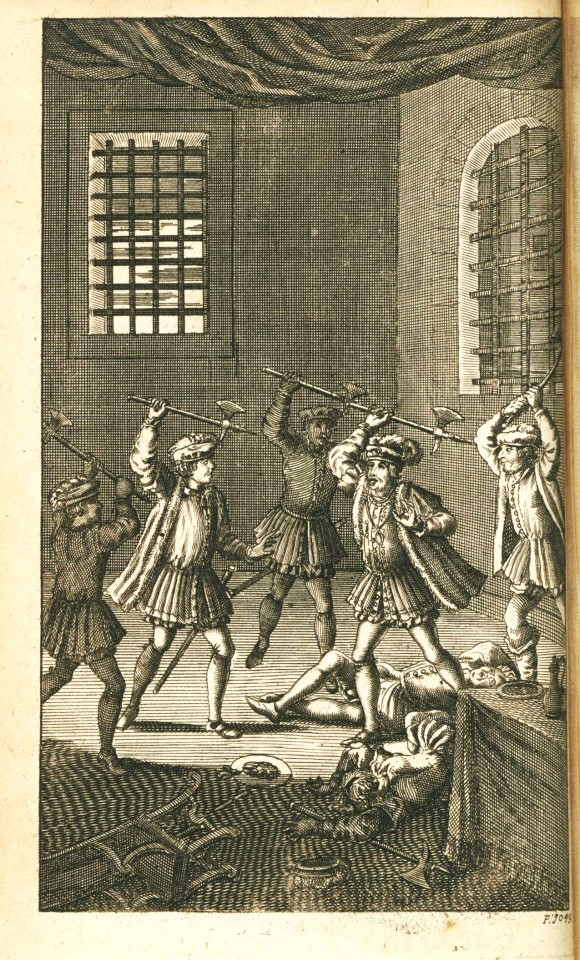
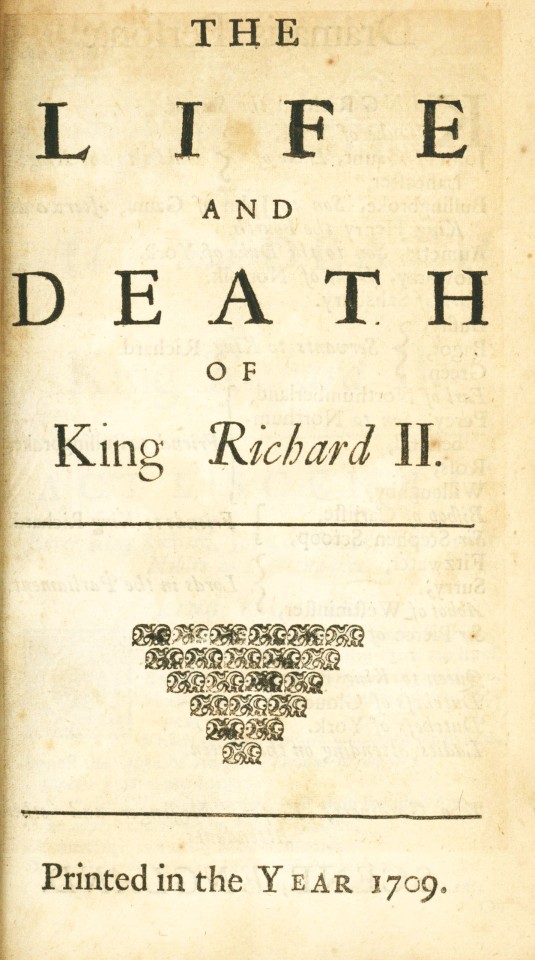



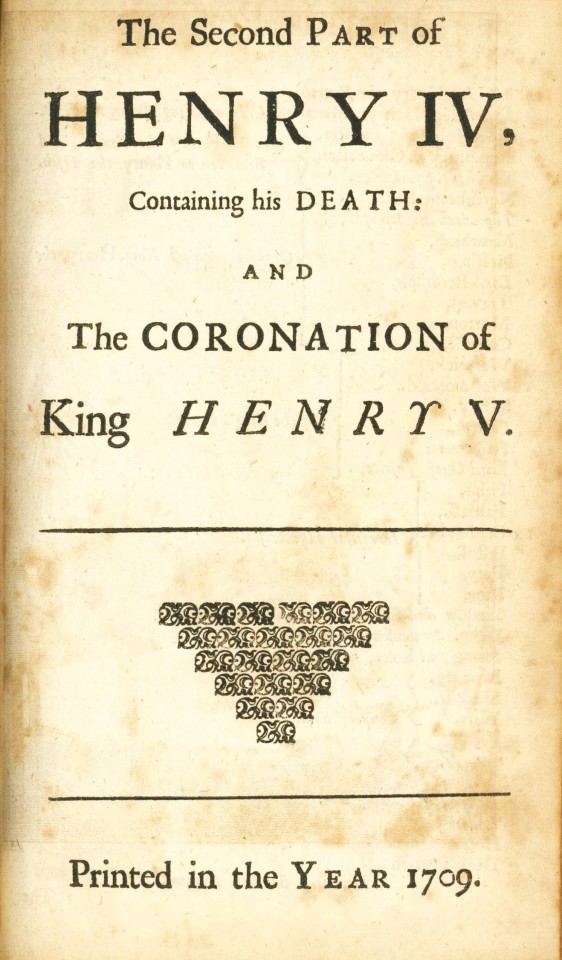

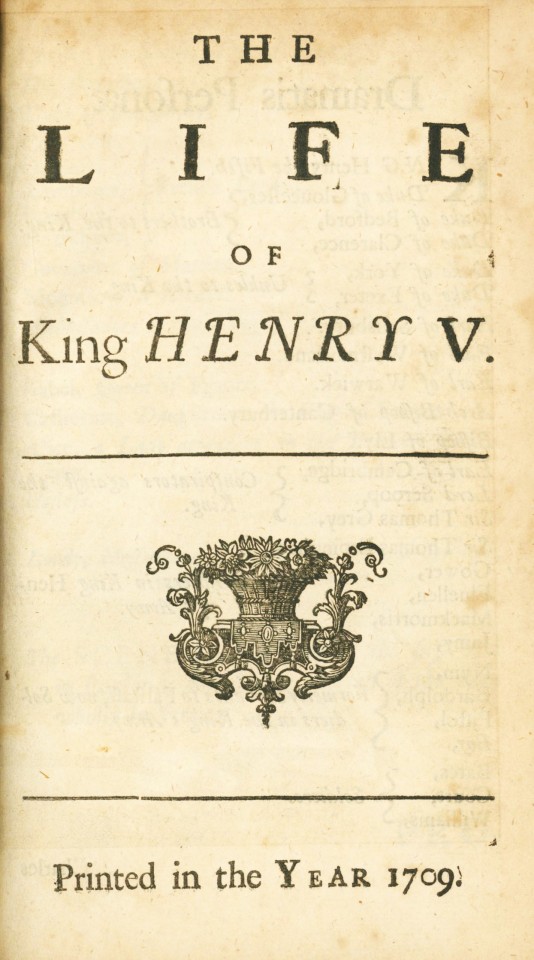
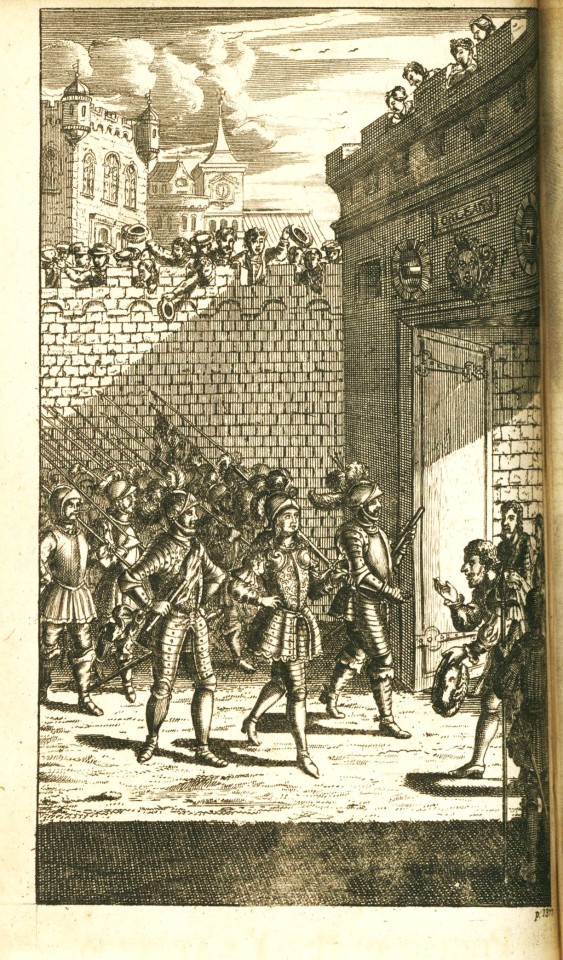



Shakespeare Weekend
We are halfway through Nicholas Rowe’s (1674-1718) The Work of Mr. William Shakespear; in Six Volumes! Published in London in 1709 by Jacob Tonson (1655–1736), this second edition holds an important place within Shakespearean publication history. The Work of Mr. William Shakespear; in Six Volumes is recognized as the first octavo edition, the first illustrated edition, the first critically edited edition, and the first to present a biography of the poet.
This week, we explore the third volume of The Work of Mr. William Shakespear; in Six Volumes. The third volume encompasses historic plays including a Shakespearean Henriad depicting the rise of English kings. The volume is comprised of King John, King Richard II, Henry IV Part I, Henry IV Part II, King Henry V, King Henry VI Part I, and King Henry VI Part II. While the plays have recurring characters and settings, there is no evidence that they were written with the intention of being considered as a group. A full-page engraving, designed by the French Baroque artist and book illustrator François Boitard (1670-1715) and engraved by English engraver Elisha Kirkall (c.1682–1742), precedes each play.
In addition to Rowe’s editorial decisions to divide the plays into scenes and include notes on the entrances and exits of the players, he also normalised the spelling of names and included a dramatis personae preceding each play. The only chronicled critique of Rowe’s momentous editorial endeavor is his choice in basing his text on the corrupt Fourth Folio.


View more volumes of The Works of Mr. William Shakespear; in Six Volumes here.
View more Shakespeare Weekend posts.
-Jenna, Special Collections Graduate Intern
#shakespeare weekend#nicholas rowe#the works of mr. william shakespear#king john#king richard II#Henry IV#King Henry V#King Henry VI#jacob tonson#henriad#François Boitard#Elisha Kirkall#engravings
60 notes
·
View notes
Text
I do not know if this one was mentioned already by anyone here but,
All the first names of the Greek Class are also names of the Royal Family. And I cannot stop thinking of Shakespeare's Wars of the Roses. Do you know how much Henry VI and Richard III connected in this one and how their relationship went... Especially how it was shown in the 2nd season of The Hollow Crown and that anime adaptation, Requiem of the Rose King?
What I am trying to point out is that Henry and Richard in TSH mirrored Shakespeare's characters (including their relationship) in utter opposites. When Henry VI was very saintly, Henry Winter isn't. Same goes with Richard III. Although, we are aware of Richard Papen's impulsive thoughts and how he almost acted like Tom Riddle for that one thing he'd done as a kid while recalling his childhood.
For some reason, even when Henry Winter and Richard Papen only knew each other for a short time, I can't help but confirm that somehow their friendship established that unbreakable bond, although it was not as established like Henry's relationship with Julian or Camilla, or even Bunny. Henry trusted Richard a great deal even though it can be considered aloof at some moments in the novel. He was even planning on giving his BMW to Richard as Mrs. Winter mentioned when he was in the hospital. I think Henry was already aware of Richard lying about his social status (all of the Greek Class were not even oblivious of that for sure as well) and yet, he stayed.
You can actually mirror their relationship with Henry VI and Richard III in Requiem of the Rose King, and the personalities I have mentioned beforehand. I do not know if Tartt did this on purpose by connecting it with Shakespeare's, but I think... she did. It paralleled somehow and everything went in sync merely because of their first names.
#my explanation isnt enough#i shall expound this when I write my 5 page analysis#mrs strange winter's analysis#the secret history#the wars of the roses#henry winter#henry vi#richard papen#richard iii#donna tartt#william shakespeare#wars of the roses#tsh#literary analysis#literary parallels
48 notes
·
View notes
Text
The Lancastrian casting did NOT have to go this hard in the Hollow Crown... Like excuse me who said they could make ALL the Henrys hotties?




Like y'all I was already pro-Lancaster I didn't need this kinda propaganda to seduce- I mean induce me
#hollow crown#henriad#the henriad#Shakespeare#jeremy irons#tom Hiddleston#Prince hal#henry v#Henry iv#luke treadaway#henry Tudor#Richmond#henry vii#richard iii#benedict cumberbatch#Beanstalk Cumberbundtcake#tom sturridge#henry vi#the war of the roses#war of roses#wars of the roses#lancaster#york#house of york#house of Lancaster#red rose#white rose#to be fair i did like dad York he was cool and i sympathized with him#his sons... less so#especially Richard
43 notes
·
View notes
Text
Shakespeare poll tag, for all the different genres!
#shakespeare#king john#richard ii#henry iv#henry v#henry vi#richard iii#henry viii#edward iii#shakespearepolls
86 notes
·
View notes
Text
Shakespearean Villain Free-for-All
The setup: the villains from ten Shakespeare plays are all competing to become the rulers of a location that none of them are personally familiar with. (This is to prevent, say, Claudius having an unfair advantage in taking over Denmark.) They are allowed to use as much scheming, and as much physical violence, as they like, and they can have as much prep time as they need before they take action.
All teams will also have access to 5-10 soldiers/servants who can fight for them and carry out tasks that the main villains don't want to do.
However, team members (e.g., Macbeth and Lady Macbeth) are not allowed to side with another team or directly kill their own allies. They can fight with each other and hamper the team's overall ability to win, but they can't directly sabotage themselves.
Who takes the crown?
Side note: Regarding the characters from the history plays, this discussion is only considering their portrayals in Shakespeare's plays, not their real-life counterparts.
#shakespeare#othello#macbeth#king lear#cymbeline#much ado about nothing#as you like it#titus andronicus#hamlet#richard iii#henry vi part 3#shakespearean villains#poll
72 notes
·
View notes
Text
#1h4 sweep let's go#although my second choice is 3h6 which is an objectively wrong answer and yet <3#shakespeare#henriad#rose tetralogy#king john#richard ii#henry iv#henry v#henry vi#richard iii#henry viii
141 notes
·
View notes
Text
okay okay okay i get the margaret of anjou hype
#henry vi#margaret of anjou#shakespeare#william shakespeare#an excellent entry on the list of Complex Women Who Have Things Wrong With Them Yet Are So Loveable <3#theatre#theater#plays
14 notes
·
View notes
Text
The promised sequel to my previous post:
If anyone wants to help me come up with drag names for these characters, please feel free!
#i’m so sorry for this. i should not be allowed to have polls#shakespeare#king john#richard ii#henry iv part 1#henry iv part 2#henry v#the henriad#henry vi part 1#henry vi part 2#henry vi part 3#richard iii#henry viii#hotspur#henry iii#henry iv#henry vi#henry vii#poll
69 notes
·
View notes
Text
arthur: being a king sucks. I wish I lived on a farm.
normal merlin fans: he's a cottagecore girlie (◠‿◠✿)
me: henry vi behaviour
#you know. from shakespeare.#henry vi's such a cinnamon roll#there's a war raging all around him and he goes sit on a hill#going: “being a king sucks. I wish I were a peasant”#“i'd love to tend sheep. that must be so peaceful”#*peasants literally dying in front of him as he speaks*#and then he has a fucking mental breakdown#he's honestly so useless and pathetic (affectionate)#he's married to a borderline abusive wife#she's out there fighting for his crown while he gets philosophical about life#she's a horrible person. i love her.#if you ever want to talk about queen margaret i'm your woman#anyway. i love it when people call arthur a cottagecore girlie#you guys are so funny#*
37 notes
·
View notes
Text
If you HAD to choose!
16 notes
·
View notes
Text
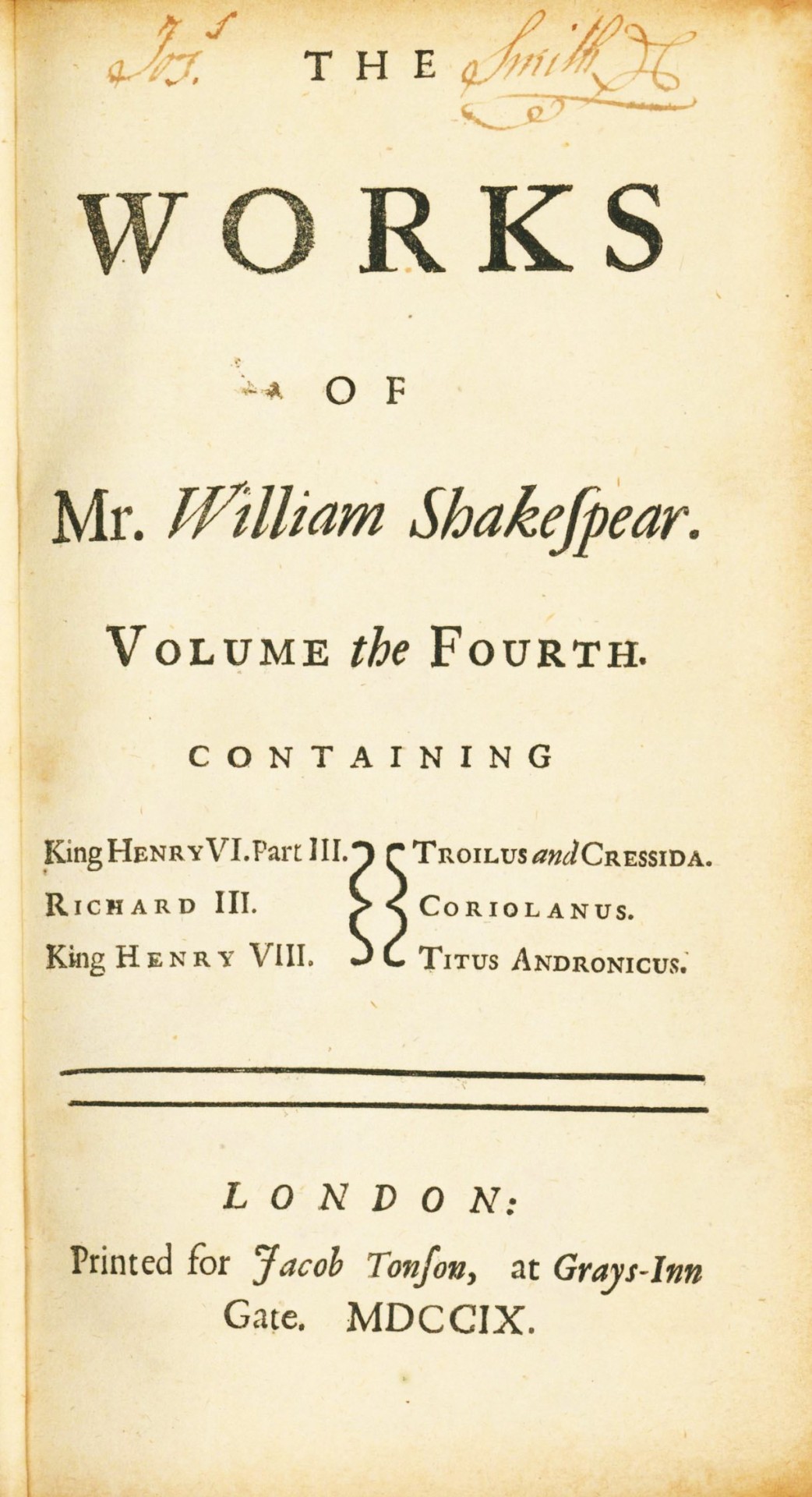
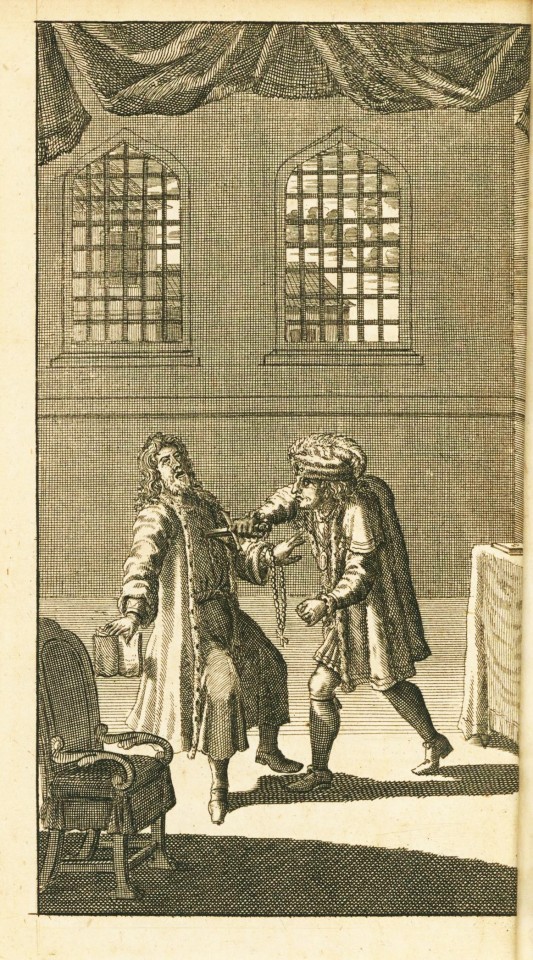
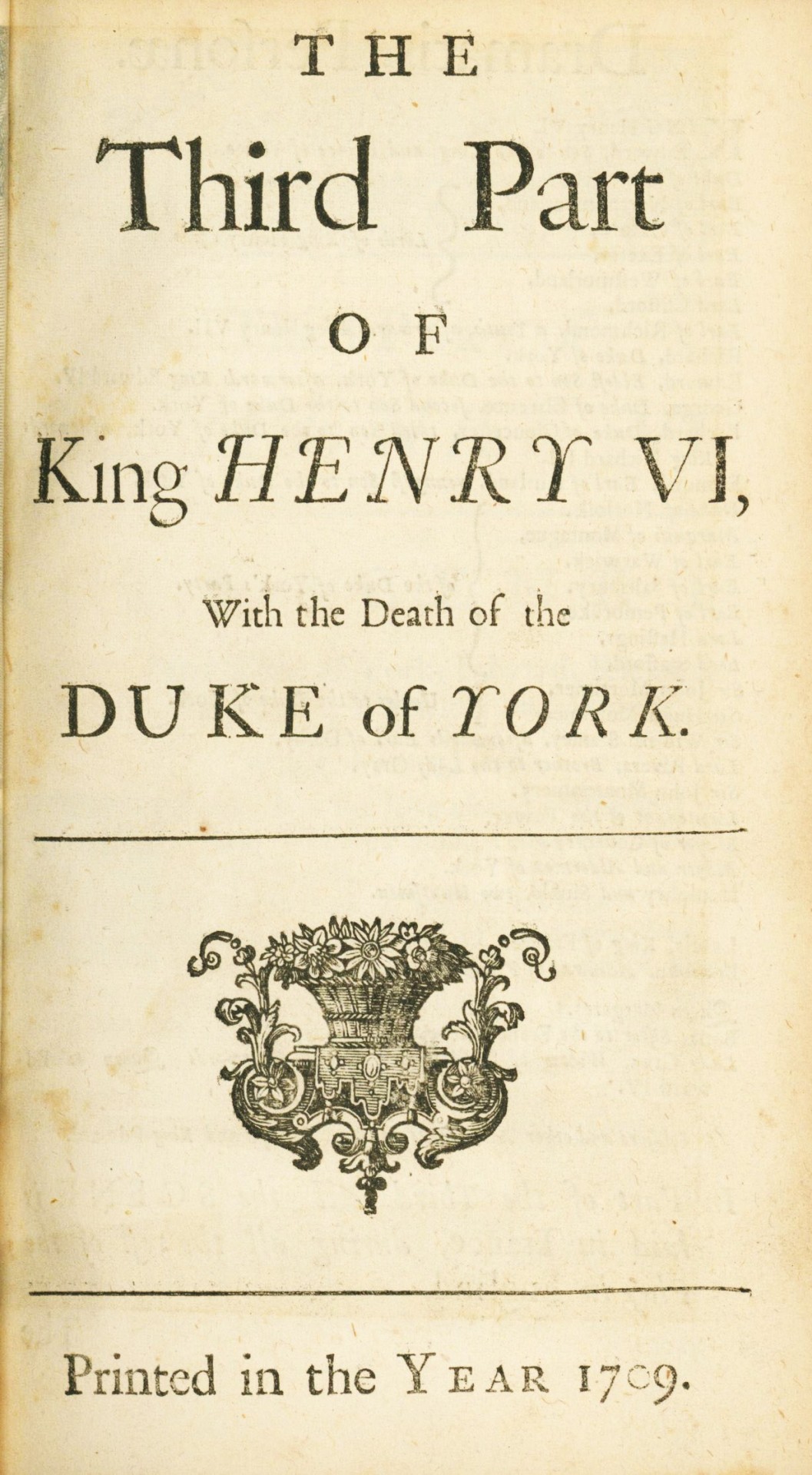


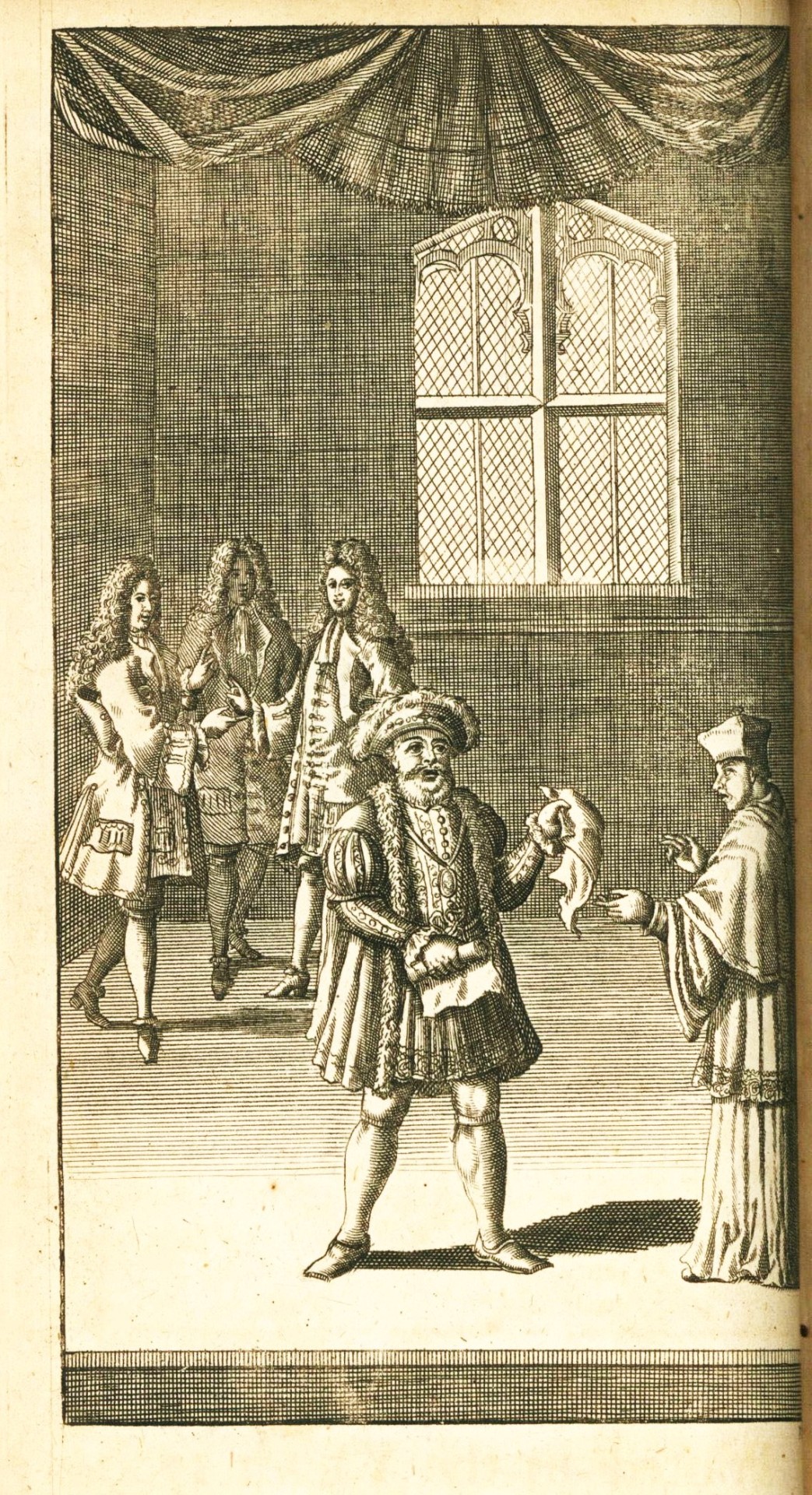





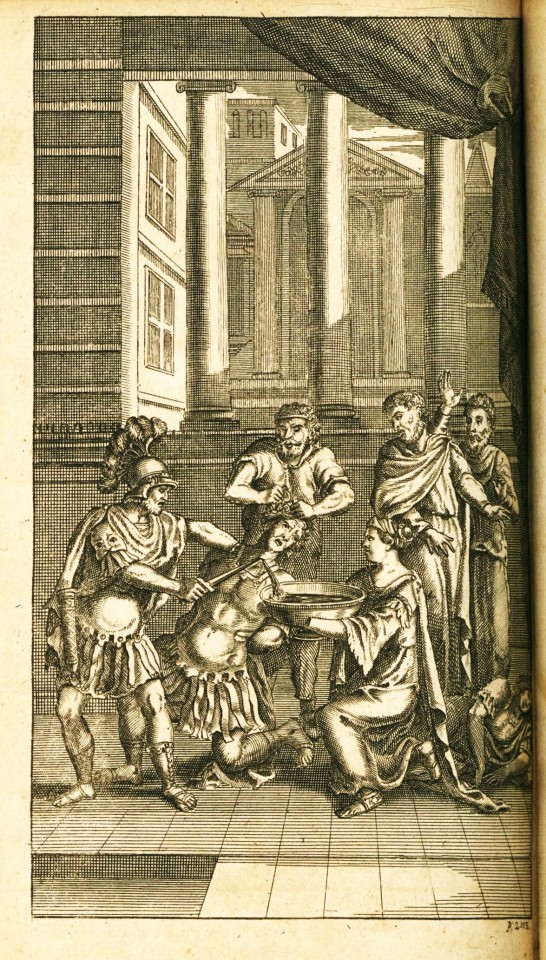
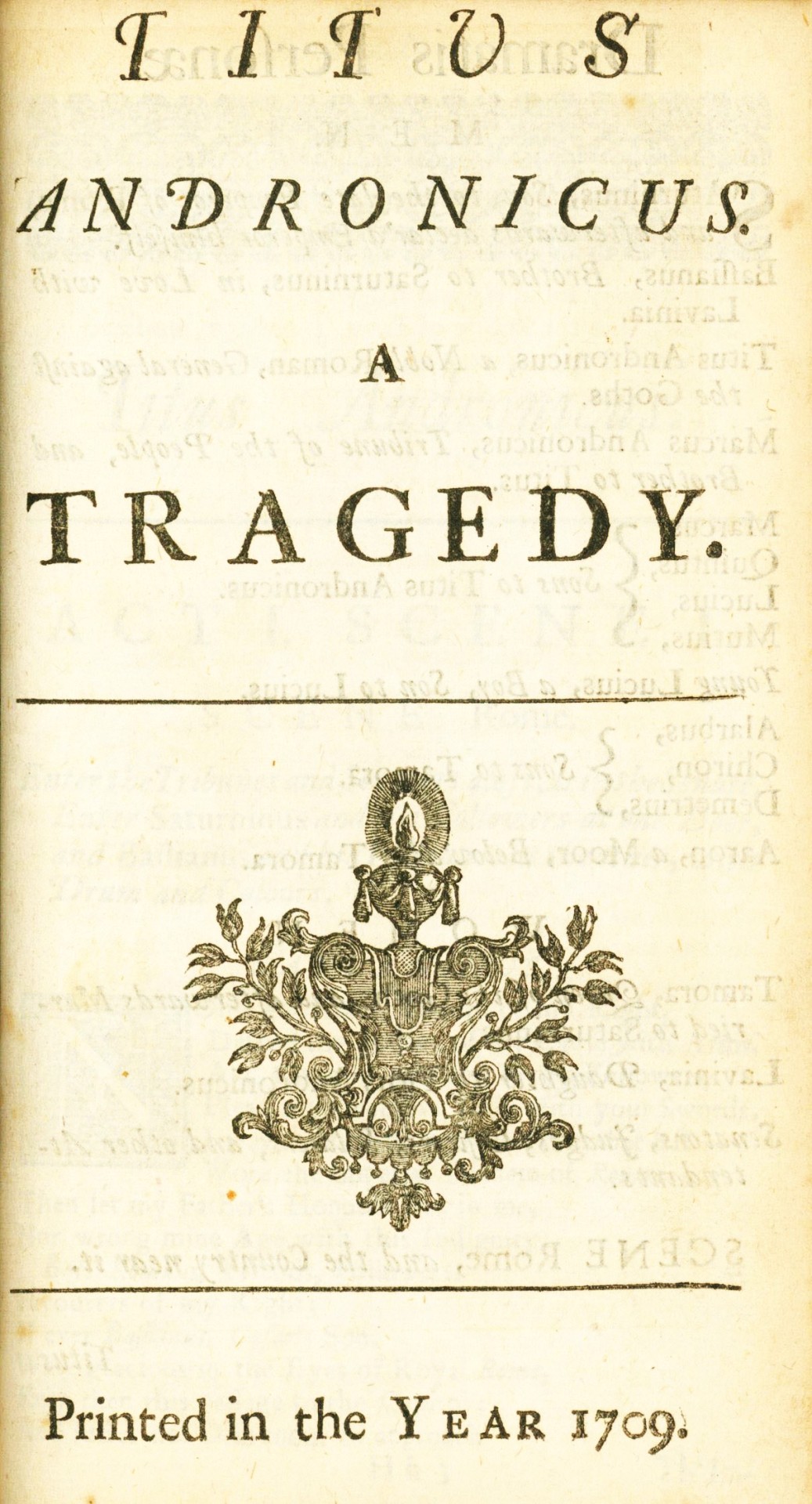
Shakespeare Weekend
This weekend we return to Nicholas Rowe’s (1674-1718) The Work of Mr. William Shakespear; in Six Volumes. Published in London in 1709 by Jacob Tonson (1655–1736), this second edition holds an important place within Shakespearean publication history. The Work of Mr. William Shakespear; in Six Volumes is recognized as the first octavo edition, the first illustrated edition, the first critically edited edition, and the first to present a biography of the poet.
Volume four picks up where volume three left off, returning readers to the Kings of England. The fourth volume begins with King Henry VI. Part III, known for having one of the longest soliloquies and more battle scenes than any other Shakespeare play. Following King Henry VI. Part III is Richard III and King Henry VIII. The volume concludes with three of Shakespeare’s tragedies; Troilus and Cressida, Coriolanus, and Titus Andronicus. A full-page engraving by the French Baroque artist and book illustrator François Boitard (1670-1715) and engraved by English engraver Elisha Kirkall (c.1682–1742) precedes each play. The Titus Andronicus engraving is particularly graphic, feeding the rumor that the play was Shakespeare’s attempt to emulate the violent and bloody plays of his contemporaries.
In addition to Rowe’s editorial decisions to divide the plays into scenes and include notes on the entrances and exits of the players, he also normalised the spelling of names and included a dramatis personae preceding each play. The only chronicled critique of Rowe’s momentous editorial endeavor is his choice in basing his text on the corrupt Fourth Folio.
View more volumes of The Works of Mr. William Shakespear; in Six Volumes here.
View more Shakespeare Weekend posts.
-Jenna, Special Collections Graduate Intern
#shakespeare weekend#nicholas rowe#the work of mr. william shakespear in six volumes#jacob tonson#king henry vi part iii#richard iii#king henry viii#troilus and cressida#coriolanus#titus andronicus#engravings#François Boitard#Elisha Kirkall
27 notes
·
View notes